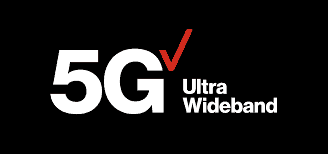 Verizon’s not-quite-ready-for-prime-time mobile 5G network hurriedly held a public launch event April 3rd using a small network of 5G millimeter wave small cells installed in downtown Chicago and Minneapolis, despite employee admissions there were significant issues with the network’s reliability, coverage, and stability.
Verizon’s not-quite-ready-for-prime-time mobile 5G network hurriedly held a public launch event April 3rd using a small network of 5G millimeter wave small cells installed in downtown Chicago and Minneapolis, despite employee admissions there were significant issues with the network’s reliability, coverage, and stability.
Driving Verizon was a chance to win bragging rights by claiming ownership of the world’s first, publicly available, mobile 5G network. In a company-produced video intended for employees, it quickly becomes apparent Verizon was preoccupied by South Korea’s own race to launch mobile 5G, and daily meetings at Verizon’s offices in New Jersey hinted at pressure to announce Verizon’s own 5G launch day as soon as possible.
It was also clearly a priority for Verizon’s new CEO, Hans Vestberg.
“Since I came into Verizon, this is the first thing I wanted to do,” Vestberg said. “I want to be first on 5G in the world.”
But was the network ready for launch and fit for purpose? As of April 1, there were still coverage, latency, and speed issues. Garima Garg, from Verizon’s Network Performance, said the 5G network was “very unstable” early in the first week of April. Attempts to test every smart cell in Chicago were unsuccessful. Garg said the team couldn’t connect to several of them.
Besides beating South Korea, Verizon’s goal was to launch 5G with speeds better than its 4G LTE network and AT&T’s enhanced 4G LTE service it calls “5Ge.” To test network performance, Verizon employees ran countless speed tests, often just across the street from light pole-mounted smart cells around 100 feet away. Just a day or so from launch, Verizon testers were still trying to address network problems, including packet loss and delayed acknowledgments on the TCP side of the uplink, which ‘really hurt speed.’ Verizon claims it resolved some of these problems in the final hours before launch with a custom software build.
Verizon’s efforts almost came to naught, because SK Telecom, South Korea’s largest wireless operator, suddenly surprised the public with a star-studded “5G Launching Showcase” the morning of the 3rd. SK Telecom technically beat Verizon’s attempt to be first to launch, but Verizon pointed out only a handful of celebrities, social media influencers and so-called “brand promoters” were given smartphones capable of connecting to SK Telecom’s 5G network. Verizon’s spin was that South Korea’s launch was effectively a publicity stunt, as no consumer could walk into a store and buy 5G capable devices on that date. Verizon’s launch, however, would be different. Any customer could immediately walk into a Verizon store in the two launch cities and walk out with a smartphone capable of connecting to 5G on the first day the network was switched on. Just in case SK Telecom had any other surprises planned, Verizon decided to move up its official launch date.
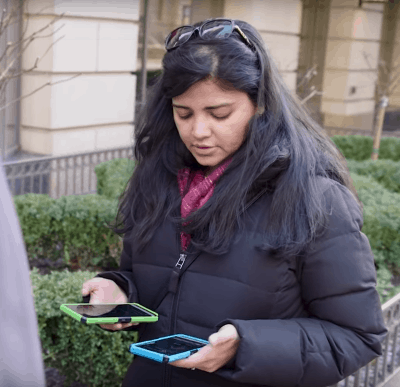
Garg (Image courtesy of: Verizon)
On the morning of April 3, Vestberg appeared in a friendly and exclusive CNBC interview announcing the launch of Verizon’s 5G mobile network. By the following day, tech reporters in Chicago gave the network its first thorough test, and found many of the same issues that had concerned Verizon engineers earlier that week. Not only was Verizon’s 5G service area miniscule, several small cells appeared not to be working at all (or at least were not available for connections), and after a day using Verizon’s 5G network, the service was deemed “unreliable” by PC.
Reporters used Moto Z3 phones with the new 5G Moto Mod back panel, which snaps on the back of the phone and delivers 5G connectivity to the Z3. The Mod concept is neither an elegant or inexpensive solution, turning the Z3 into a bulky and heavy handset. The Moto Mod also has its own battery, and not a high-capacity one at that. Testers reported it was dead after five hours of significant use. It cannot be recharged by the phone either. At some locations, reporters were able to verify Verizon’s 5G network did deliver a significant improvement in speed — up to 600 Mbps peaks on small cells that likely had few, if any other customers connected at the time. But the densest parts of Chicago’s downtown were already well-served by Verizon’s 4G LTE network, which capably peaked at 400 Mbps.
Verizon’s mobile 5G network relies on millimeter wave frequencies, which are very short-range and sensitive to solid objects, which can block or degrade the signal. Despite Verizon’s earlier claim that it saw better than anticipated range and performance from the company’s millimeter wave fixed wireless service running in a few other cities, real world testing showed the effective range of Verizon’s smart cells was less than expected for mobile users. Verizon claimed up to 800 feet of range from each 5G small cell, but testing found that claim wildly optimistic.
“I saw more like 300 feet of effective range, with speeds dropping below LTE levels beyond that, even though my 5G indicator would dutifully flicker on until about 450 feet,” reported PC’s
Sascha Segan. “The Mod seems unable to judge when a 4G connection would be better than a 5G one, so it hangs on to 5G for dear life even if it’s just eking out a few megabits. A phone should probably prefer a good lower-gen connection over a poor higher-gen one.”
Real world testing also revealed the expected shortcomings of mobile 5G — it can be downright terrible indoors.
“Stand under the cell site, you get 600 Mbps down. Go into the Starbucks, through glass, and that’s cut to 218 Mbps,” Segan wrote. “Go around the corner and duck into the lobby of a stone building that doesn’t face onto the site, and you’re down to 41.5 Mbps. Lower frequency bands do not have this behavior.”
Of course, it is early days for Verizon’s 5G and network and software improvements are likely to significantly improve service. But Verizon’s experience strengthens the theory that small cells are likely to thrive only in dense population areas where there is already a high traffic demand. It seems unlikely that Verizon’s 5G network will make economic sense to deploy in outer suburbs and rural areas. It may not even play well in the suburbs.
Verizon produced this video covering the challenges launching their mobile 5G network in Chicago and Minneapolis in early April. (12:34)


 Subscribe
Subscribe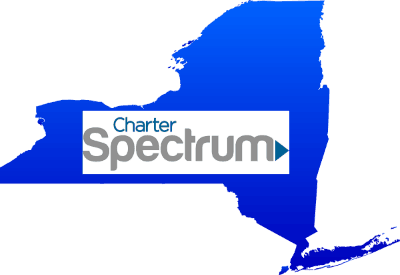 Charter Communications and the New York Department of Public Service announced a tentative settlement Friday that would allow Spectrum to continue providing cable TV, phone, and internet service in New York in return for a renewed commitment from the cable company to meet its 145,000 new passings rural broadband buildout agreement, commit to an expansion of that rural buildout, and in lieu of fines, pay $12 million in funds deposited in two escrow accounts to be used to help defray the costs of further broadband service extensions apart from Charter’s original commitments.
Charter Communications and the New York Department of Public Service announced a tentative settlement Friday that would allow Spectrum to continue providing cable TV, phone, and internet service in New York in return for a renewed commitment from the cable company to meet its 145,000 new passings rural broadband buildout agreement, commit to an expansion of that rural buildout, and in lieu of fines, pay $12 million in funds deposited in two escrow accounts to be used to help defray the costs of further broadband service extensions apart from Charter’s original commitments.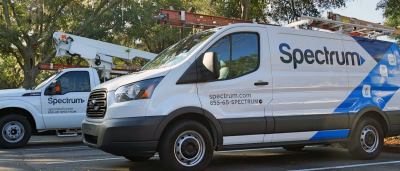 Charter did not even come close. Department Interim CEO Gregg C. Sayre
Charter did not even come close. Department Interim CEO Gregg C. Sayre  A review of the proposed legal settlement shows
A review of the proposed legal settlement shows 
 Although New York Gov. Andrew Cuomo promised broadband service for any New Yorker that wants it, his New NY Broadband Program left more than 80,000 New York homes and businesses behind because the program relied on private companies to bid to serve each unserved/underserved New York address. In especially rural areas, no company ultimately bid to reach those addresses because the subsidy funding offered by the state was too little to make the expansion investment worthwhile. In the end, those addresses were designated to be served by HughesNet, a satellite internet service provider. But HughesNet cannot guarantee its internet speeds, has draconian usage caps, and is very expensive. Customer satisfaction scores are also generally poor. For most, a wired internet solution is far preferable. To get one, New York would need to launch a new round of broadband funding, with a more generous subsidy to make construction costs to reach those unserved customers financially worthwhile.
Although New York Gov. Andrew Cuomo promised broadband service for any New Yorker that wants it, his New NY Broadband Program left more than 80,000 New York homes and businesses behind because the program relied on private companies to bid to serve each unserved/underserved New York address. In especially rural areas, no company ultimately bid to reach those addresses because the subsidy funding offered by the state was too little to make the expansion investment worthwhile. In the end, those addresses were designated to be served by HughesNet, a satellite internet service provider. But HughesNet cannot guarantee its internet speeds, has draconian usage caps, and is very expensive. Customer satisfaction scores are also generally poor. For most, a wired internet solution is far preferable. To get one, New York would need to launch a new round of broadband funding, with a more generous subsidy to make construction costs to reach those unserved customers financially worthwhile.
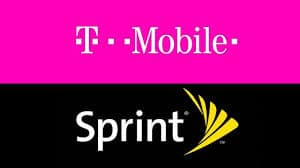 Justice Department staffers have told T-Mobile and Sprint that their $26 billion merger is unlikely to win approval as presently structured, according to
Justice Department staffers have told T-Mobile and Sprint that their $26 billion merger is unlikely to win approval as presently structured, according to 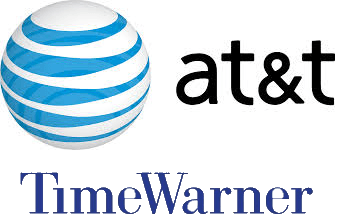 (Reuters) – The White House has told two U.S. House Democrats it will not turn over documents that could show whether Republican President Donald Trump sought to intervene in the regulatory review of AT&T Inc’s $85 billion acquisition of Time Warner Inc.
(Reuters) – The White House has told two U.S. House Democrats it will not turn over documents that could show whether Republican President Donald Trump sought to intervene in the regulatory review of AT&T Inc’s $85 billion acquisition of Time Warner Inc.